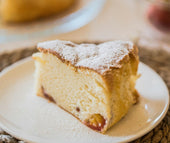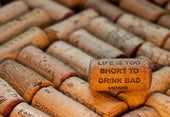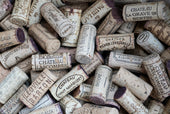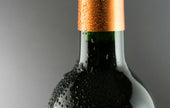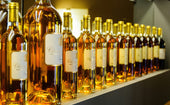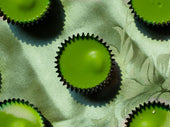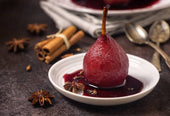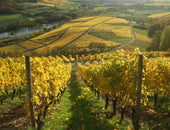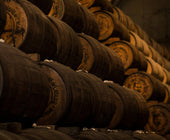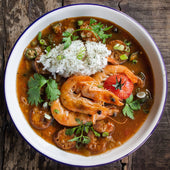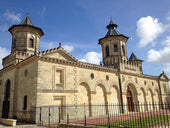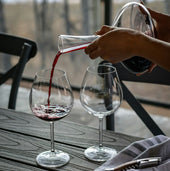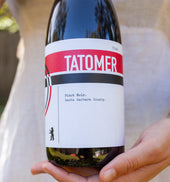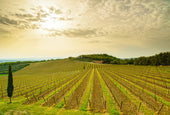
Prohibition and Its Impact on America’s Alcohol Industry and Consumer Culture
“What America Needs Now is a Drink” by Iris Rowlee
1920 may have sucked more than 2020
100 years ago this month, in December of 1920 America was wrapping up the first year of its enactment of the nationwide “Prohibition” of the production, transportation, importation, exportantion, and sale of alcohol through the 18th Amendment. This period would become known as “the noble experiment”, taken from Herbert Hoover’s description of Prohibition as "a great social and economic experiment, noble in motive and far-reaching in purpose". The Spanish Flu Pandemic that had ravaged the world for the last two years had just fizzled out in Spring of that year, leaving an international death toll that rivaled that of the recently ended, devastating World War One. To top all of this off, the American populace was so riled up with social and political divide, that a comparison of 1920 to 2020 would make now look pretty chill.

The Wets vs the Drys
As complex as politics are now, they were then also, but there was one simple seeming cataclysm that had been brewing for some time and emerged as the main focus of foment: booze and the government's role in dictating and enforcing its place in society. It was the Drys versus the Wets. This seems simple enough, but many complications involving social unease and inequity underpinned it.
The Drys and their Allies
The Drys, as you may imagine by the terse alliterative name, thought that alcohol caused many of the nation's woes and that it should be banned for the sake of a better society. They constituted an array of groups whose diverse beliefs and agendas happened to overlap on this issue. The organized push to ban alcohol in America began in earnest in the 1800s as religious fervor to clean America of its boozy sins fomented in Protestant, Methodist, Baptist and other religious settings.
In 1869 the Prohibition Party was formed, with the goal of, you guessed it, and it still exists today bearing a Camel as its mascot. It joins the Elephant and the Donkey, taking claim to the title of oldest existing third party in the US, and is still active, with Nevada resident Phil Collins having run as the presidential candidate in this year's 2020 election. The Prohibitionists were joined by members of both the Democratic and Republican parties in supporting the ban.

The Women's Christian Temperance Union, created in 1873, is also still an active organization as well. They gained a very large national grassroots base in the decades leading up to Prohibition. It was founded under the basic guise of temperance as defined by Greek writer Xenophon’s definition as "moderation in all things healthful; total abstinence from all things harmful." The main theme was that alcohol was causing many social ills that needed to be rectified. In the 1800s in America alcoholism (primarily in men) was a rampant problem throughout society, and women and families were subject to ruin at the hands of it. Women often suffered abuse and had few rights, let alone any chance of becoming independent , from the whims of an afflicted partner, who they had to depend on for sustenance and support. Wives and mothers, women of the community came together in frustration with the desire to temper the problem for the betterment of all. This naturally led to a connection with the women’s suffragist movement, as the inability to vote led to the inability to effect policy that so affected them. Most pro-Prohibition groups endorsed women's suffrage as so many women were pro-temperance, and this milestone of women voting would be achieved only months after the commencement of Prohibition with the ratifying of the 19th amendment.
Carrie Nation, was one stand out case in quirky details as a radical member of the Temperance Movement. After losing her first husband to alcoholism she said she had a spiritual vision that called her to fight against alcohol and liked to describe herself as, "a bulldog running along at the feet of Jesus, barking at what He doesn't like". Her preferred method of barking was with a hatchet that she used to destroy booze and bar fixtures, all while singing and praying with her growing posse, at unsuspecting drinking establishments around the country. She was arrested for this no less than 32 times in ten years doing what she came to call "hatchetations". She led marches, gave lectures and even sold mini hatchets with the words Death to Rum on the handle. She definitely gets max points for originality and tenacity.
The Anti-Saloon League, which still exists as the American Council on Addiction and Alcohol Problems, was founded in 1893 and arguably became the strongest Prohibition lobby in the TemperanceMovement’s push for Prohibition, propositioning for legislation that would further their goals. In 1913 the 16th Amendment was passed, establishing the Federal Income Tax, which Prohibitionists hoped would bring in enough money for the government to replace the current, incredibly fortuitous, number one bread winner, taxes levied on alcohol revenue.
There were people sympathetic to, and involved in the array of Prohibitionist organizations who had strong American nativist beliefs. Confusingly, the name does not mean indigenous to America but rather, relating to those of the Anglo-Saxon ancestry associated with the original 13 colonies. They sought strong immigrant restriction measures and felt their cultural values were threatened. There was often harbored resentment and xenophobic sentiments towards the burgenouning new immigrant communities and the cultures they brought with them and much blame was placed upon them for societal woes.
The Wets and the Inequity of the Laws’ Interpretation and Execution
The Wets and the opposition to Prohibition constituted just about everyone else. Catholic and Lutheran communities rallied behind beer makers, but a lot of the supporters' focus had waned in the lead up to Prohibition due to World War One. Every year that Prohibition was in place, it gained more critics as tax revenues fell shorter and shorter and costs for enforcement continued to rise exponentially. Many felt that rural religious values were being forced on the modern, urban American, at the cost of economic well being and safety.
Al Capone expressed the inequity best saying, “When I sell liquor it’s bootlegging, when my patrons serve it on Lake Shore Drive, it’s called hospitality.” Hardened gangsters were the least of the inequities victims in this matter. As good and just as things may look on the books, enforcement is key, and not only was enforcement societially preferential, but the laws were vague enough that they could be left open to interpretation. Historian Lizabeth Cohen was quoted saying, "A rich family could have a cellar-full of liquor and get by, it seemed, but if a poor family had one bottle of home-brew, there would be trouble.” The expensive nature of bootlegged liquor led to a lack of accessibility for most of the working class yet endlessly flowed to the more privileged. Also those who were of means had acquired and hoarded large, legal personal stashes of booze as unfortunate producers, retailers, and saloons desperately sold off their stock as Prohibition loomed. This was obviously not an option for most and felt like an in your face affront to everyday workers who were being locked up for the littlest bit of swill, simply because they hadn’t had the money to obtain in mass prior to the start of Prohibition or the social status to drink it in an exclusive setting. Money went a long way towards helping Depression Era law enforcement turn a blind eye.
Drunk (Presidential) History
As expected the double speak of the time was found in the White House as well. Woodrow Wilson was the President in 1919 when the congress ratified the 18th Amendment and subsequent National Prohibition Act (often referred to as the Volstead Act), the legal framework for enabling and enforcing it. President Wilson tried unsuccessfully to veto it. When he left office in 1920 he took with him his large private alcohol stash, making way for his successor Warren G. Harding to move his unending whiskey supply in. Harding, not without irony, voted for the Prohibition, clearly aware his privilege would leave him unencumbered by it. Harding died only three years later under somewhat mysterious circumstances in San Francisco, supposedly at the Palace Hotel. However many local historians argue that he actually died at one of his favorite establishments, the legendary bar (and at that time hopping speakeasy) across the street, the House of Shields. Your trusty author for one, has seen the tunnel (pre 2009 renovation) that connected the bar to the hotel and was used to hide the traveling rich and powerful from sight, leaving them free to come and go from their watering hole unnoticed.

This brings me to one of my favorite topics for good historical chuckles, hard drinking presidents, and let’s just say America’s had a lot of them. The founding fathers would have balked at the thought of Prohibition. The Declaration of Independence was written in a beloved Philadelphia bar, The Indian Queen Tavern. The signing party was one for the books, with an impressive bevy of consumed booze, the tab included 54 bottles of Madeira, 60 bottles of Claret and 22 bottles of Port for starters.
Thomas Jefferson was a wine aficionado whose initial British colonial influenced palate for the heavy fortified styles of wine like Port, Madeira and blended Clarets changed later in life. He grew to revere the lighter, regional specific wine styles of France and Italy after becoming America’s Prime Minister to France in 1785. His lengthy touring of Bordeaux, Burgundy, Rhone and Piedmont’s wine regions led to his lifelong passion for wine collecting and consumption. George Washington liked the harder stuff and later in life became one of the largest producers of whiskey in the New World. Benjamin Franklin, a passionate and prolific Madeira drinker, once compiled a Drinkers Dictionary for the Pennsylvania Gazette in 173, listing over 200 synonyms for being inebriated such as biggy, stitch'd, fuzl'd, jagg'd, and my favorite, lappy. The first president born a U.S. citizen, Martin Van Buren, received the endearing nickname “Blue Whiskey Van'' for his vigorous consumption and legendary tolerance of the good stuff. Grover Cleveland whet his thirsty whistle throwing back an average of 8 beers a day.
John F. Kennedy, who was personally more into other extracurriculars, was riding on the huge family fortune made by his father Joseph who had utilized prior connections and financial holdings to land some incredibly lucrative, exclusive contracts importing big name UK spirits like Dewar’s and Gordon’s right on time for Prohibition’s end. Lyndon Johnson, who followed Kennedy, was known for his love of large, endlessly replenished white foam cups of “driving (Cutty Sark) scotch and soda” while cavorting around his ranch. And of course there was Nixon, who sent his Secretary of State Kissinger into conniptions with his drunk dialing incidents, especially when they involved military action. The point of this little walk down sidetrack lane, other than for giggles and to cite that the party knows no party lines, is that our nation’s history is seeped in the spirit.
Prior to Prohibition the Trajectory was Bright
At the time that Prohibition squelched growth, the nation’s alcohol industry had developed great sophistication, respect on the international stage and was blossoming into its greater potential. There were long established and well demarcated wine regions around the country which received much domestic fanfare with wine loving citizens. The wines were also popular exports in Europe, where they’d first come to fill the void during the Phylloxera epidemic but went on to become Parisian wine fair award winners by the latter half of the 1800s (100 years before the Judgement of Paris). California was at the top of the list for production, followed by New York, Missouri, Ohio, Illinois, Georgia, New Mexico and New Jersey. Texas, Arkansas, Alabama, the Carolinas, Virginia and many other states had notable wineries as well. Some of these latter states might surprise you, as production was so decimated that the history was all but lost. The same fate befell most artisanal beer, cider and spirit makers. To add insult to injury, perhaps because of Murphy’s law, of course, the 1919 vintage, particularly in California, was said to be a fabulous and bountiful one. Dumping it, along with their reserves, barrels and equipment and therefore dumping all of their cumulative hard work and future dreams must have really hurt.
Illegal Booze and the Creation of Crime through Prohibition
“It is the prohibition that makes anything precious,” observed Mark Twain. I think there have been enough gangster movies made that I don’t need to go over the details of the fact that Prohibition led to a huge spike in crime, particularly the organised kind that sought to quench the country’s newly illicit thirst with rum runners, bootleggers and speakeasies galore.
In California, it is said that some winemakers just ignored the laws and kept making wine and supplying it to locals and disobeying restaurants with the combo of acting clandestinely and local law enforcement looking the other way. Pope Valley Winery, while supposedly shut down, was said to have supplied wine to Al Capone’s speakeasies in Chicago using a train line that ran from Napa to Chicago. The deals were brokered by a friend the owner's son had made in the military during WWI who had mob affiliations back in the Windy City.
Legal Alcohol Consumption Options and Production Loopholes
As we discussed, private ownership and consumption of alcohol were not made illegal under federal law (although some places banned it outright) but obtaining it was the hard part. Other than the illegal options there were some legally sanctioned loopholes, mainly medical, religious and homemade, plus lots of good old grey area.
Medical Booze
Medicinal alcohol was a key loophole in the law, but only for those who could afford it, as prescriptions themselves and the doctor sanctioned hooch came at a premium. Also an indicative tidbit of who things were marketed to, French champagne was somehow on the ok list for medical use and its importation didn’t entirely cease. Local wines and spirits were also supplied as medicines, which kept some producers afloat. Doctors and drug stores made large sums of money as prescription “needs” skyrocketed. The drugstore chain Walgreens started Prohibition with 20 stores and by its end had 601 stores spread out over 30 states. They however, attribute much of their success to the introduction of their milkshakes, wink wink.
Religious Booze
The use of wine for religious purposes was also explicitly allowed in the Volstead Act and what a rallying point that was. By 1924 the government was cracking down on the huge growth in this sector. Nonetheless this allowance was what helped many wineries survive. San Antonio Winery in Los Angeles, founded just a few years before Prohibition, was able to make it through because of a contract with the Archdiocese of Los Angeles to produce its ceremonial wines, which they still do to this day. Bernardo Winery in San Diego, Concannon and Wente Vineyards in Livermore and Beaulieu in Rutherford all were saved by the sacramental wine route as well. In Washingtonville, New York, America’s oldest winery, Brotherhood Winery, founded in 1839, also made it through Prohibition making and selling wine for religious ceremonies. It is interesting to note that, quite conveniently for ceremonial wine producers, the clergy population in the area grew substantially during this time as well.
Homemade Booze
In this DIY nation, the most widespread way of obtaining hooch was making it yourself. Secret stills popped up all around. The Volstead Act definitely forbade making alcoholic beverages, but home production and consumption was a grey area many capitalized on. Many articles mention a part of the law that stated a loophole allowing for each household to make up to 200 gallons of wine a year for personal consumption, but this wasn’t actually written anywhere in the Volstead Act. That number came from a pre-Prohibition law capping tax free home production at that number. Furthermore, the grey area came with an ABV issue; home beverages could have some alcohol but couldn’t be “intoxicating”. This was interpreted many ways, often with great leniency but at other times, as in the case of amateur home winemaker and whipping boy, Maryland congressman John Phillip Hill, resulted in his being arrested and federally charged.
All this being said, this DIY gray area was a boon to the grape growers because selling grapes and making grape juice was legal, as was an invention of necessity, grape bricks, also called raisin cakes, which were boxes of compacted grapes for making “grape juice”. They came with warnings (aka backwards instructions) like those from the popular California brand Vino Sano, which said “After dissolving the brick in a gallon of water, do not place the liquid in a jug away in the cupboard for twenty days, because then it would turn to wine.” This tactic, along with sacramental sales, is what kept long lived St. Helena winery Beringer in business. As grape sales skyrocketed across the country, California, which had been the largest producer of wine in the country at the time of Prohibition’s enactment, saw its vineyard acreage almost double by 1927. Not surprisingly, California has the largest number of pre-Prohibition era wineries.
Quantity over Quality led to Shifting Vineyard Varieties
Unfortunately this great expansion was not a sign of good times for the American grape growing wine world. In 1926 the price of grapes dropped drastically due to a glut in supply and things did not pick up economically, as one might imagine even after Prohibition's end because of the impending Great Depression and subsequent World War Two.
Most wineries had been forced to close and had to haplessly sell, or often dispose of all they had worked so hard for. Sometimes the vineyards were uprooted to ensure compliance and often to make way for new crops in hopes of alleviating the economic straits of their owners. This eradication of infrastructure and viticultural lineage, also led to the loss of the identity and much of the history in the previously burgeoning wine regions around the nation.
This erasure of quality, substance and heritage happened just as drastically in the vineyards themselves. There was a great shift in the grape varieties that were planted. Traditional and beloved wine grapes made way for the more practical endeavours of the time. The characteristics needed for this brave new world weren't the same qualities needed to make fine wine. Thick skinned, high yielding, easy travellers were the grape traits needed, not the delicate, discerning, if not downright fussy varieties that were known to make some of the best wines.
Workhorse “shipping grape” varieties like Muscat of Alexandria, Alicante Bouschet, Petite Sirah, Carignane, Cinsault, Zinfandel, and Mataro (Mourvèdre) replaced the likes of Pinot Noir and Chardonnay, which couldn’t hold up to long distance freight travel and didn't look hearty and appealing in a brick form. By the end of Prohibition, for all the grapes planted in California there were only 800 acres of Cabernet Sauvignon, 600 acres of Pinot Noir, 450 acres of Riesling, and 300 acres of Chardonnay.
The End of Prohibition
On December 5th, 1933, under the presidency of Franklin D. Roosevelt, Congress ratified the 21st Amendment, the first and only constitutional amendment created to repeal another, thus repealing the 18th Amendment and ending Federal Prohibition. Roosevelt, who’d run his election campaign with a strong platform to repeal, loved to host cocktail hour, mixing drinks for closest advisors from his study desk in White House and was said to have favored a good Plymouth gin martini himself. His love of a good drink aside, legalizing the booze business was a great opportunity to collect tax revenues that had been lost and to try to rectify the costs of enforcing Prohibition that had been adding to the Great Depression. It was said that upon hearing the news of ratification, Roosevelt exclaimed, “What America needs now is a drink.”
Americans rejoiced but celebrating was not as rambunctious as one might think as after the federal ban ended, as individual states were given their own control over alcohol laws and many states initially maintained the Prohibition in the beginning. The law only went into immediate effect, that day, in 18 states. Some states held on for many years with Mississippi taking the cake for longest abstinence, staying legally dry until 1966. There are still counties within ten states that are completely dry. Prior to prohibition the drinking age varied state to state but was usually around 15 and was rarely enforced. After Prohibition most states set the drinking age at 21 and established legal hours of operation for the selling and serving of alcohol. The other big societal change was that before Prohibition, bars were dominated by men but once Prohibition was lifted, after so many years of grey area equal opportunity speakeasies women had a comfortable place at the bar and certainly with far less of the stigmas that pre-Prohibition had.

Post Prohibition
The repercussions of Prohibition can still be felt to this day. Not only had the loss of industry and infrastructure set a huge hamper on the natural, healthy development and growth of the nation's alcoholic beverage manufacturing sector but, when the repeal finally came the people were deep into the Depression and didn’t have the money to spend even if quality had been on the market, which it wasn’t. The “quantity and strength” motto was outriding quality and after almost 14 long, painful years America’s taste and national consciousness had been changed by the circumstances. The national palate had been reduced by hard times. Beer, bulk wine and spirits reigned supreme and artisanal tastes were few and far between as quality producers had been purged and the industry returned to infancy. It was not until the 1960s that a wine making revival, followed by a craft beer and spirit producing revival set in motion the growth and changes that today would make the Pre-Prohibitioners proud. As hard as it is not to think what could have been if we hadn’t had a hard reset 100 years ago but after a deeper look, it's also hard not to feel grateful for everything we’ve got today. Cheers America.
View Prohibition and its Impact: Part II HERE.

This article was contributed by Iris Rowlee. She is a Court of Masters certified Sommelier, a Vinitaly International Academy Italian Wine Ambassador, and a 3iC Certified Educator.



